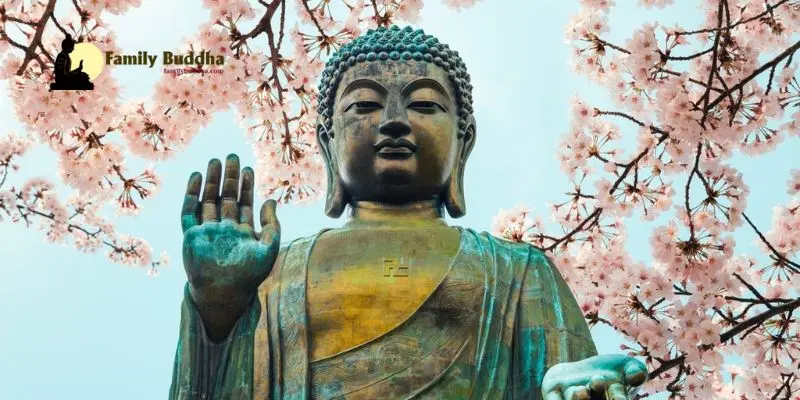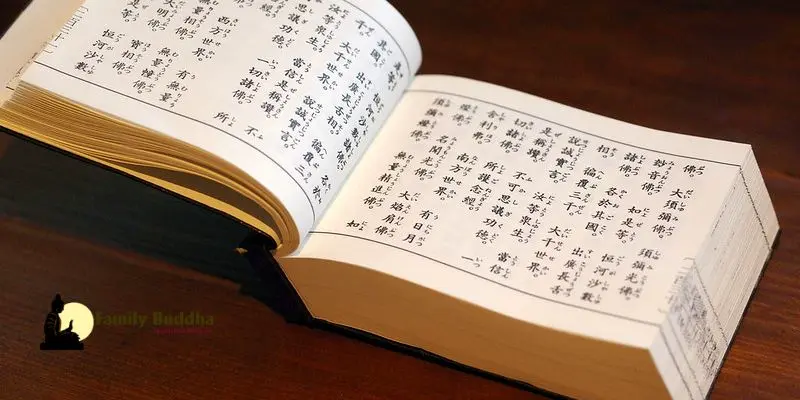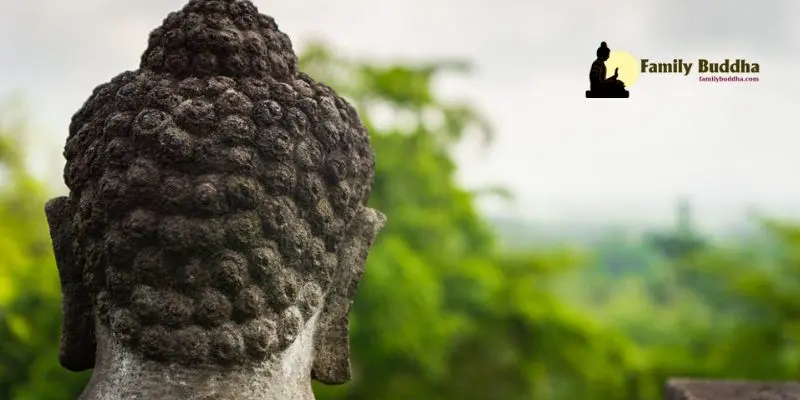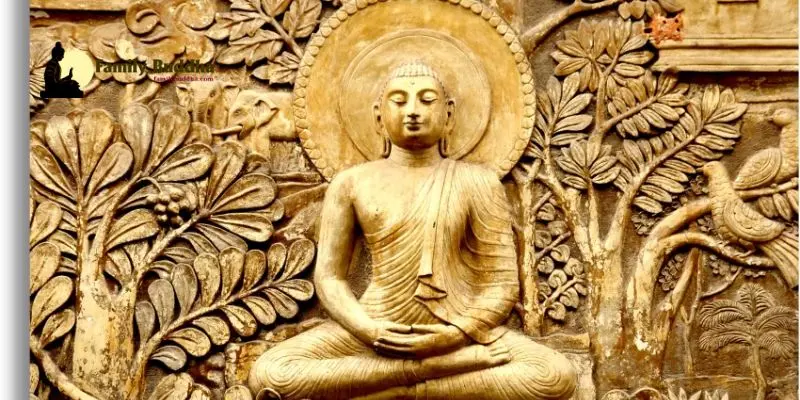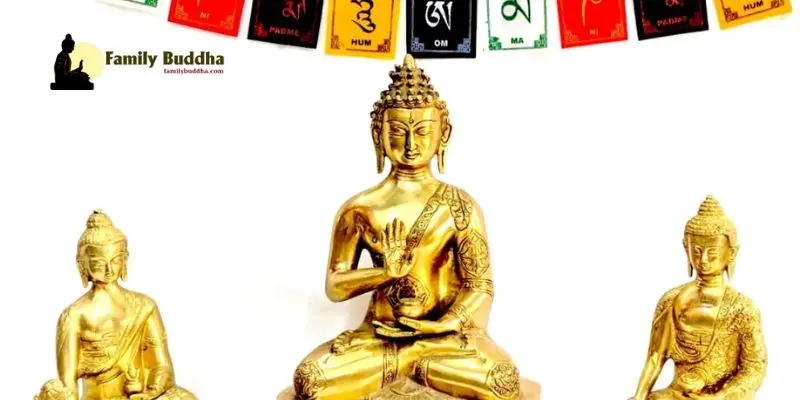The timeless guidance of the ancient practice of Aware Buddhist Discipline aids in navigating the complexities of the modern mind amidst the hustle and bustle of life. Amidst the myriad interruptions and conflicting reasoning, this meditative Buddhist discipline, rooted in the profound teachings of Siddhartha Gautama, the Buddha, offers a transformative journey towards self-mastery. It unveils invaluable insights into the workings of the mind and its influence on our lives.
Embarking on the path of mindfulness, concentration, and insight, Familybuddha.com uncovers the multifaceted dimensions of Buddhist wisdom, inspiring the cultivation of mental strength and paving the way toward inner peace. Within this journey lies not only a renowned route to tranquility but also an enduring philosophy that urges us to explore the boundless potential of our consciousness.
The Buddhist Approach to Discipline

In the Pratimoksha Sutra, Buddha advocated for prioritizing moral values over the fear of death, emphasizing that moral deterioration jeopardizes our prospects for enduring happiness across multiple lifetimes. Death profoundly impacts our current existence, akin to holding a ticket to a brighter future free from the burdens of unfortunate rebirths.
Buddha imparted insightful guidance, highlighting meditation as the paramount method for cultivating discipline. Acting as a form of mental training, meditation fosters focus and tranquility. Buddha advised practitioners to find a serene environment, relax, and clear their minds, affirming that meditation is the optimal route to mastering Buddhist meditative Discipline.
Central to the Buddhist Meditative Discipline are scientific and contemplative practices aimed at nurturing awareness, concentration, and insight. Rooted in the Eightfold Path and the Four Noble Truths, this discipline acknowledges the intrinsic nature of human suffering while advocating for mental mastery as the path to transcend it. Through various meditation techniques, practitioners dismantle mental conditioning and cultivate profound self-awareness, fostering a deeper understanding of both themselves and the world.
Buddhist Meditation
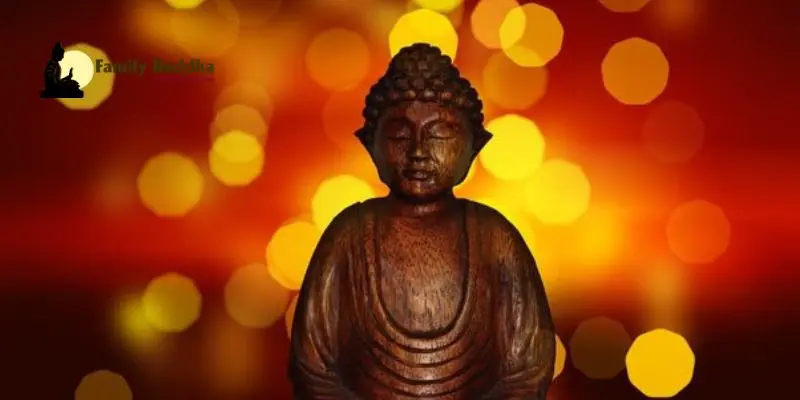
A recent study delved into the foundational meditation practices taught by Buddha, particularly focusing on the Anapanasati Sutta, which revolves around the principles of “sati” or awareness, aimed at cultivating self-control and self-mastery.
The essence of “loving awareness,” synonymous with mindfulness, extends beyond traditional meditation sessions, permeating into our daily lives. The fundamental idea is to maintain a continuous awareness of our actions, facilitating easier adaptation when necessary.
Initially, the practice begins with attentiveness to the breath, acknowledging each inhalation and exhalation with the mental notes “in” and “out.” This practice transcends the confines of seated meditation, infusing every moment of wakefulness with mindfulness. Despite inevitable setbacks, the key lies in persevering with renewed determination.
Enhancing breath awareness naturally extends to mindfulness in activities, such as writing, eating, standing, and sitting, even mundane tasks like using the restroom. Heightened awareness discourages engagement in trivial activities, fostering a deeper sense of purpose and control.
Conscious acknowledgment of emotions acts as a deterrent against impulsive actions, catalyzing self-discipline. This heightened awareness prompts us to steer clear of harmful behaviors, guiding us along the path of self-control.
Maintaining an upright posture and focused breathing, even during seemingly mundane activities like watching TV, serves as a constant reminder of mindfulness. The subsequent phase, termed “common sense,” comes into play during these moments of awareness.
Grounded in the understanding of cause and effect, common sense illuminates the path forward, aiding in discerning between beneficial and detrimental actions, thereby avoiding distractions and time wastage.
However, applying common sense can prove challenging amidst emotional upheavals like anger, dissatisfaction, or despair. In such instances, cultivating mindfulness infused with loving awareness becomes imperative. Before embarking on transformation, it’s crucial to release the burden of guilt associated with past habits, approaching our emotions with compassion while exercising sound judgment to guide our decisions.
The meditative Buddhist discipline Practice

In Buddhism, engaging in meditation can be likened to a mental workout. Utilizing technical terms like jhana/dhyana, practitioners aim to cultivate a serene and luminous state of mind. Additionally, the term Bhavana is employed to denote mental development, akin to honing one’s mental faculties through training.
This practice serves as a profound training ground where individuals are instructed to relinquish attachment and desire, freeing themselves from negative energies or defilements. Attaining awakening, the ultimate state akin to the premium section of peace is referred to as Nirvana.
A myriad of meditation techniques is employed, ranging from anapanasati, focusing on conscious breathing, to contemplating unpleasant aspects (asubha bhavana), reflecting on the interconnectedness of all phenomena (pratityasamutpada), and cultivating recollections and mindfulness. Ultimately, these techniques aim to facilitate the attainment of optimal states of awareness and mental tranquility (dhyana).
Through these practices, practitioners induce relaxation and heightened awareness, fostering the integration of the mind (samadhi) and the cultivation of insight (vipassana). However, it’s worth noting that practitioners may encounter extraordinary experiences, often referred to as Abhija or superpowers, along their journey.
There are now a variety of flavors across the Buddhist world
The Buddhist landscape now boasts a diverse array of approaches and practices. While some individuals are drawn to the pursuit of insight (vipassana), others prioritize the cultivation of mental relaxation (samatha), reflecting an age-old tension between tranquility and understanding. In Mahayana Buddhism, there’s an emphasis on the combined practice of samatha and vipassana, whereas the Theravada tradition tends to focus primarily on vipassana.
Regardless of tradition, breath meditation holds a central role in Buddhist practice, serving as a gateway to attaining heightened mental states. Buddhist meditation thus represents the ultimate quest for achieving profound wisdom or inner serenity.
A research paper by Alok Kumar Verma titled “Buddhism and Vipassana Meditation: A Scientific Method for Mental and Social Growth in the Modern Age” highlights the benefits of Vipassana meditation in fostering happiness, relaxation, and effective societal contribution. By practicing Vipassana, individuals can lead fulfilling lives and positively impact their families and communities, thereby promoting happiness, peace, harmony, and bliss in society.
Mindfulness Meditation
Mindfulness meditation, also known as Vipassana or Insight Meditation, stands as a cornerstone in Buddhist contemplative practices. This approach centers on cultivating a heightened awareness of the present moment, encompassing the observation of thoughts, emotions, and sensations.
In Buddhism, meditation catalyzes introspection, with a particular focus on the concepts of impermanence (Anicca) and non-self (Anatta). By recognizing the transient nature of existence, individuals can liberate themselves from attachments and desires that lead to suffering. This realization underscores the impermanent and ever-changing nature of all phenomena, forming an integral aspect of the path toward mental mastery.
Buddhist Meditation: Delving into Deep Contemplation

At the core of Buddhist discipline lies a fundamental belief: the mind serves as the gateway to understanding the nature of existence. Through the practices of mindfulness, concentration, and insight, practitioners embark on a profound journey of deep meditation, aiming to quiet the incessant chatter of the mind and gain clarity of perception.
Central to this discipline is the Buddha’s Four Pillars of Mindfulness, which serves as a guiding compass for individuals navigating the complexities of their inner worlds. Rooted in ancient wisdom imparted by Siddhartha Gautama, the founder of Buddhism, this meditation technique aims to cultivate a profound sense of mindfulness, self-awareness, and compassion.
Buddhist meditation is not merely a passive endeavor but an engaged practice that catalyzes significant shifts in thought patterns, fostering emotional balance, heightened focus, and a deeper understanding of life’s essence. Through consistent practice, individuals learn to approach obstacles with kindness and equanimity.
Moreover, Buddhist meditation extends beyond the confines of formal sitting sessions, advocating for the integration of mindfulness into everyday activities. It emphasizes the importance of cultivating moral conduct and engaging in compassionate deeds as integral components of the practice.
In “Zen and the Psychological Significance of Meditation as Related to Believing,” Li-Jie Du explores the evolution of meditation from its origins in Zen Buddhism to its diverse contemporary forms. This article delves into the spiritual dimensions of “sitting meditation” and its connection to psychological processes, shedding light on the multifaceted nature of meditative practices in both religious and secular contexts.
Key Findings from Research

In his exploration of Buddhist Meditation and Depth Psychology, Douglas M. Burns underscores the remarkable achievements of Western civilization in terms of wealth and grandeur, largely attributed to advancements in science, technology, and social structures. However, amidst this prosperity, Burns highlights a critical oversight: the neglect of inner development.
Despite mastery over external environments, Western society has witnessed a decline in discipline and an increase in sensual pursuits, potentially jeopardizing the stability and sustainability of democracy. Burns suggests that the solution lies in fostering informed, disciplined, and motivated individuals who are essential for the preservation of democratic ideals.
Drawing from Buddhist principles, Burns proposes a method for achieving this vital transformation. However, he emphasizes that responsibility for personal growth and moral fortitude ultimately rests with each individual. By confronting anxieties and strengthening moral foundations, individuals can play a pivotal role in shaping a harmonious and resilient society.
Discipline arises when mindfulness does.
The emergence of discipline coincides with the cultivation of mindfulness. As we refine our conduct, we simultaneously stabilize our awareness, recognizing the emptiness inherent in the aggregation of our experiences. This steadfast awareness ensures that we remain faithful to our commitments and vows. Phakchok Rinpoche articulated these insights in his 2021 article titled “Maintaining Meditation Discipline: Tools to Bring Your Meditation Practice to Every Moment.”
Buddhist meditation offers peace and clarity in modern culture’s hectic, stressful environment.
Buddhist meditation serves as a sanctuary of peace and clarity amid the chaos and stress of modern life. Extensive research validates its benefits in enhancing mental well-being, alleviating stress, and sharpening cognitive abilities. In an era marked by rapid change and constant pressures, the ancient wisdom of Buddhist Discipline offers a timeless and accessible toolkit for navigating the complexities of the mind.
At the heart of Buddhist meditation lies the pursuit of liberation, which entails transcending the ignorance, aversion, and attachment that cloud our understanding. This ultimate goal is achieved through deep meditation, leading practitioners towards the realm of pure consciousness and interconnectedness, beyond the superficial layers of self. By mastering the mind, individuals attain absolute freedom and enlightenment, awakening to a profound sense of clarity and liberation.
Wrapping Up
Buddhist meditation serves as a disciplined exploration of the mind’s intricacies, providing a pathway to profound spiritual insight, inner tranquility, and self-awareness. Rooted in the teachings of the Buddha, this practice manifests in diverse meditation styles, transcending generations and cultural divides.
Those who engage in meditation embark on a transformative journey that enhances their well-being, fosters empathy, and deepens their understanding of life’s complexities. Ultimately, meditative Buddhist discipline has the potential to enrich the very fabric of human existence.


